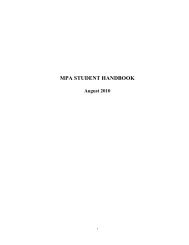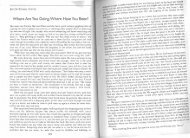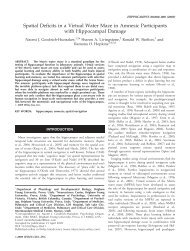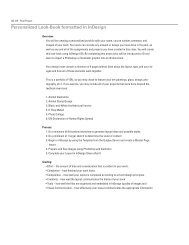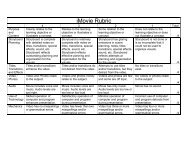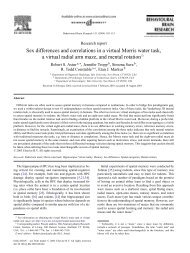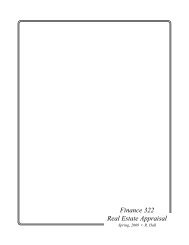Currency substitution in selected African countries - Emerald
Currency substitution in selected African countries - Emerald
Currency substitution in selected African countries - Emerald
You also want an ePaper? Increase the reach of your titles
YUMPU automatically turns print PDFs into web optimized ePapers that Google loves.
s<strong>in</strong>ce the 1960s. First, we have a rule-based regime. The currency board system is<br />
def<strong>in</strong>ed as a set of rules prevent<strong>in</strong>g the exercise of discretion <strong>in</strong> most dimensions of<br />
central bank activity (see Honohan and O’Connell, 1997). For <strong>in</strong>stance, <strong>in</strong> most of the<br />
British colonies (Ghana, Kenya, Nigeria, Zambia, among others) this system prevailed<br />
throughout the 1960s. On the other hand, <strong>in</strong> the French colonies (Ben<strong>in</strong>, Côte d’Ivoire,<br />
Senegal, Central <strong>African</strong> Republic, Burk<strong>in</strong>a Faso, among others) a rule-based system<br />
with much more control from France was implemented. It simply pegged local<br />
currencies to the French national currency (the French franc). As a result, monetary<br />
policies of these <strong>countries</strong> were almost entirely conducted by proxy by France<br />
throughout the 1960s to the 1990s. Recently, these <strong>countries</strong> are conduct<strong>in</strong>g somewhat<br />
more <strong>in</strong>dependent monetary policies.<br />
The second form of monetary regime is the automatic monetary f<strong>in</strong>anc<strong>in</strong>g system.<br />
In this system, authorities make extensive use of deficit f<strong>in</strong>anc<strong>in</strong>g by issu<strong>in</strong>g<br />
high-powered money to accommodate any macroeconomic shock. Fiscal deficits for<br />
<strong>in</strong>stance are essentially f<strong>in</strong>anced through <strong>in</strong>flation tax. Countries like Liberia, Sierra<br />
Leone, Somalia and Zambia (<strong>in</strong> the 1980s, 1990s); Angola (<strong>in</strong> the 1990s) and Democratic<br />
Republic of Congo (from the 1970s to the 1990s) fit <strong>in</strong> this category. In other words, the<br />
quest for a controlled <strong>in</strong>flation is not a key objective of monetary decision-makers <strong>in</strong><br />
these <strong>countries</strong>. As a result, these <strong>countries</strong> have experienced persistent <strong>in</strong>flation, or<br />
even hyper<strong>in</strong>flation.<br />
Third, there is the controlled economy regime or ration<strong>in</strong>g regime. In these regimes,<br />
goods and exchange rates are rationed mean<strong>in</strong>g that prices and quantities cannot<br />
fluctuate to clear markets. Authorities keep a tight control over the money supply. All<br />
shocks are accommodated through the establishment of rations. Thus, monetary policy<br />
<strong>in</strong> these economies is almost entirely passive or <strong>in</strong>active. Ghana, Tanzania and Uganda<br />
among others implemented such regime <strong>in</strong> the 1970s; while other <strong>countries</strong> like Angola<br />
and Mozambique among others used it for a longer period throughout the 1970s and<br />
1980s.<br />
Fourth, there is the monetary arrangement with credit ceil<strong>in</strong>g. In this regime,<br />
commercial banks are limited <strong>in</strong> their ability to create money by the monetary<br />
authorities. Many <strong>African</strong> <strong>countries</strong> have <strong>in</strong>troduced this form of monetary<br />
arrangement start<strong>in</strong>g <strong>in</strong> the 1980s (see for <strong>in</strong>stance Killick and Mwega, 1990).<br />
Ethiopia, Malawi and Nigeria have had a monetary policy driven by credit ceil<strong>in</strong>g from<br />
the 1970s to the 1980s. Others like Kenya, Zambia and Ghana among others have used<br />
this regime <strong>in</strong> the 1970s and 1980s, respectively.<br />
F<strong>in</strong>ally, we have market-clear<strong>in</strong>g regimes. In these regimes, most of the decisions<br />
made by monetary authorities f<strong>in</strong>d their rationales through the forces of markets. They<br />
enjoy much more <strong>in</strong>dependence vis-à-vis the government and <strong>in</strong> the implementation of<br />
their policies. The government itself barely relies on expansionary monetary policies to<br />
offset the fiscal deficit. There is no preset credit ceil<strong>in</strong>g as <strong>in</strong> the previous monetary<br />
arrangement: markets’ conditions dictate the creation of money by banks. This form of<br />
regime is not currently widely observed <strong>in</strong> Africa. However, as more and more <strong>African</strong><br />
governments are becom<strong>in</strong>g fiscally responsible and embrac<strong>in</strong>g the rules of good<br />
governance, we are witness<strong>in</strong>g a movement towards the establishment of <strong>in</strong>dependent<br />
central banks able to implement <strong>in</strong>dependent and market-based monetary policies. For<br />
example, Kenya has been implement<strong>in</strong>g a market clear<strong>in</strong>g approach s<strong>in</strong>ce the 1980s<br />
and Ghana started <strong>in</strong> the 1990s.<br />
<strong>Currency</strong><br />
<strong>substitution</strong><br />
619



